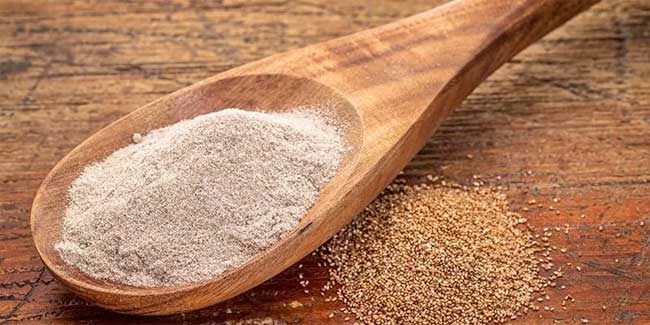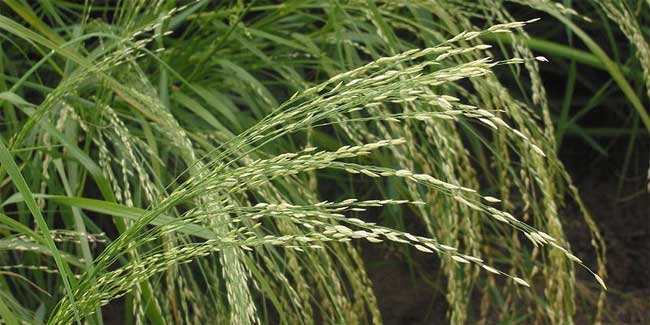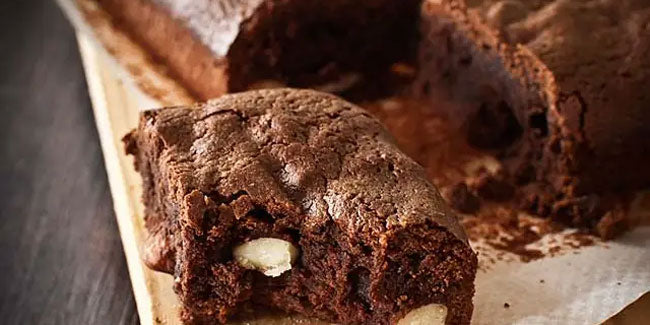
What is Teff Flour?
Teff is the world’s smallest grain, measuring just 1/100th of the wheat grain. It is native to Ethiopia and is a staple grain in the country. It can be eaten as a grain or milled into flour. With the increase in gluten-free alternatives, teff flour has become markedly more popular in recent years.
Teff flour is completely gluten-free (though cross-contamination may still occur depending upon production facility), and so it is commonly used in cooking and baking for those with dietary requirements. If you’re looking to find out more about teff flour, read on to find out what teff flour is, how it is used, and some of our favourite teff flour containing products.

Teff flour: what is it?
Teff flour is the powdered and ground form of the teff grain. Teff belongs to the grass family and is grown primarily in Ethiopia. It comes in a range of varieties, but brown and ivory are the most popular.
Teff flour is high in calcium, as well as iron. It contains good levels of dietary fibre making it good for digestion. It has a light, earthy and slightly nutty flavour and can be baked into bread as well as other foods.
Is teff flour low carb
Teff flour is a good source of complex carbohydrates, and so is quite high in carbs. It is not recommended on the keto diet. 
Teff flour uses
In Ethiopia, teff flour is used to make a traditional, sourdough bread called injera. This bread is a fermented flatbread that is used as the base for a whole range of traditional Ethiopian dishes.
Teff flour is commonly used in gluten-free recipes. It can be used alone or mixed with wheat flour for those who can tolerate gluten. Recipes that can use teff flour include:
- Pancakes
- Cookies and biscuits
- Gluten-free noodles and pasta
- Bread, including injera
- Cakes and muffins
Teff flour should be substituted into recipes by replacing ¼ of the wheat flour and mixing the two together. It will add lots of nutrition and flavour to your recipe.
Health benefits of teff flour
Teff flour can add a lot to your diet. Not only is it gluten-free, and so suitable for many with intolerances to the protein, it is also full of micro and macronutrients. We’ve gathered a few of the health benefits of adding teff flour into your diet. Check out our list below.
- Teff flour contains about 12.2g of your daily fibre per 3.5ounces. This is significantly higher than wheat flour and makes teff flour a good aid to digestion and overall health.
- The flour is incredibly high in iron, a vital nutrient that our body needs but cannot produce.
-
It has a low glycaemic index, so may be useful for those who need to maintain their blood sugar levels.

Teff flour containing products we love
There are lots of products that now contain teff flour. Given its high nutritional value, it is a good addition to any diet and can help maintain a healthy lifestyle. We’ve rounded up a few of our favourite teff flour and teff flour containing products. Check it out.
- Bob’s Red Mill Gluten Free Teff Flour. A pure and simple teff four option, suitable for those with gluten intolerances and sensitivities.
- Schar Twin Bar. This gluten-free chocolate bar is a treat for those with gluten intolerances. It contains a range of gluten-free flours, including teff flour, adding nutrition to your biscuits.
- Franjo’s Kitchen Lactation Biscuits Gluten-Free Currant. These lactation biscuits are perfect for those who are breastfeeding. Packed full of goodness, including teff flour, chia seeds, and buckwheat, these biscuits help to increase breastmilk production.
- Franjo’s Kitchen Lactation Biscuits Gluten-Free Choc Chip. Another lactation biscuit option, but this time chocolate chip flavour.
Lots of gluten-free and healthy products contain teff flour to add nutrition to these products. There are lots to choose from, or you could find a new recipe and try adding teff flour into your baking!
Conclusion
Teff is a tiny grain, native to Ethiopia, and used around the world as a gluten-free grain alternative to wheat. It can be ground into a powder and made into flour for use in baking and cooking. It is traditionally used in a fermented flatbread called injera, used in Ethiopian cuisine.
It is a hardy and drought-resistant grain and the flour has a light, earthy, and nutty flavour. It can be added to pancakes, cookies, muffins, pasta, and bread. To use teff flour in recipes, you should substitute ¼ of the flour and use it alongside other flours in the recipe unless specified otherwise.
Teff flour contains lots of dietary fibre and nutrients, making it a highly nutritious food source. It has a low glycaemic index so may be good for those wishing to regulate their blood sugar levels. Teff flour appears in lots of gluten-free products including cookies and biscuits

Frequently Asked Questions
Is teff flour healthy?
Teff flour is a healthy flour option for those with gluten sensitivities. It contains lots of dietary fibre and has high levels of essential nutrients, like calcium and iron. It can add a light and nutty flavour to recipes and is usually entirely gluten-free, depending upon the facilities it is produced in. Teff flour is high in complex carbohydrates but has a low glycaemic index.
Where does teff flour come from?
Teff flour comes from the teff grain, which is part of the grass family. It grows mainly in Ethiopia, where it is native, though it can be grown in other countries. The grain is milled into a fine powder to make the flour.
Can you substitute teff flour for regular flour?
Teff flour can be used in baking, but substitutions should only be made for about ¼ of the regular flour. Teff flour makes the product less chewy due to the lack of gluten protein. Teff flour can be used in recipes that call for it, but substitutions should mix teff flour with other flours.
What does teff flour taste like?
Teff flour has a light, earthy, and nutty flavour. It adds flavour and nutrition into recipes and can be fermented to make sourdough bread, like injera, a traditional Ethiopian flatbread.

Leave a comment